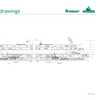When Up Is Down
The situation is similar when looking at total commercial petroleum inventories (commercial crude oil plus refined product inventories). A surplus to year-ago levels that was as high as 87.7 million barrels as of the week ending January 4, and was as high as 83 million barrels as recently as the week ending February 8, is now just 38 million barrels above the level last year. With large increases in commercial petroleum inventories last April and May, this surplus could also disappear by next month. With the peak of the gasoline season still ahead, the year-over-year inventory surpluses we've become accustomed to may be fading away.
Retail Gasoline Prices Stay Put
The retail price for regular motor gasoline was static this week, staying at $1.404 per gallon after dropping to that level last week. This price is 21.5 cents lower than last year. Prior to last week's drop, prices had been flat or rising for the previous eight weeks. Prices remained rather stable throughout the country, with New England and the Central Atlantic seeing slight increases (1.0 and 0.8 cents), while the rest of the country stayed flat or saw slight decreases. Prices in the Midwest stayed flat at $1.379 per gallon. While inventories are currently above last year's level, they are just slightly above the 5-year average level, and experienced a decline last week. In addition to inventory levels, ongoing strife in major crude oil producing regions such as the Middle East and Venezuela, as well as OPEC's reluctance to raise their quota in the coming months, have the potential to disrupt crude oil and product markets. For further information, see the Summer Motor Gasoline Outlook, released on April 8, which anticipates that gasoline prices are likely to rise further, although they are expected at this time to remain below levels seen the last two years. However, with the season just beginning, it is difficult to know how events will unfold this summer. Last year, after rising in the spring and then falling in the middle of summer, gasoline prices rose again towards the end of summer.
Jet Fuel Demand Maintains Status Quo
Despite the week over week drop in jet fuel demand, the overall picture remains robust as the most recent four week period continues to show demand trailing less than 4 percent below the comparable period last year. Jet fuel demand over the four-week period ending April 19, 2002, maintained the 1.6 million barrel per day average reported the previous week. Continuation of cheap airfares appears to be one of the drivers behind the recent rebound seen over the past several weeks. But it is still uncertain whether the upward trend can be maintained during the summer travel season if major airlines abandon this practice and return to more normal pricing policies. Over the last four weeks, total demand for petroleum products was less than two percent below the same period last year, continuing a trend of declining differentials that started during the first quarter of the year as petroleum demand began approaching year-ago levels.
(Source: U.S. Department of Energy, Energy Information Administration)












